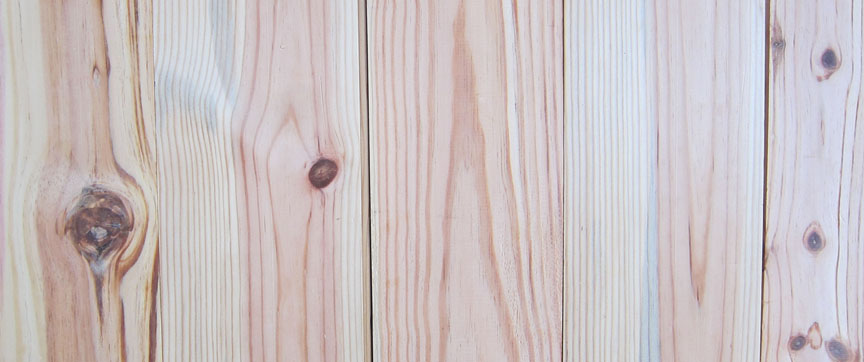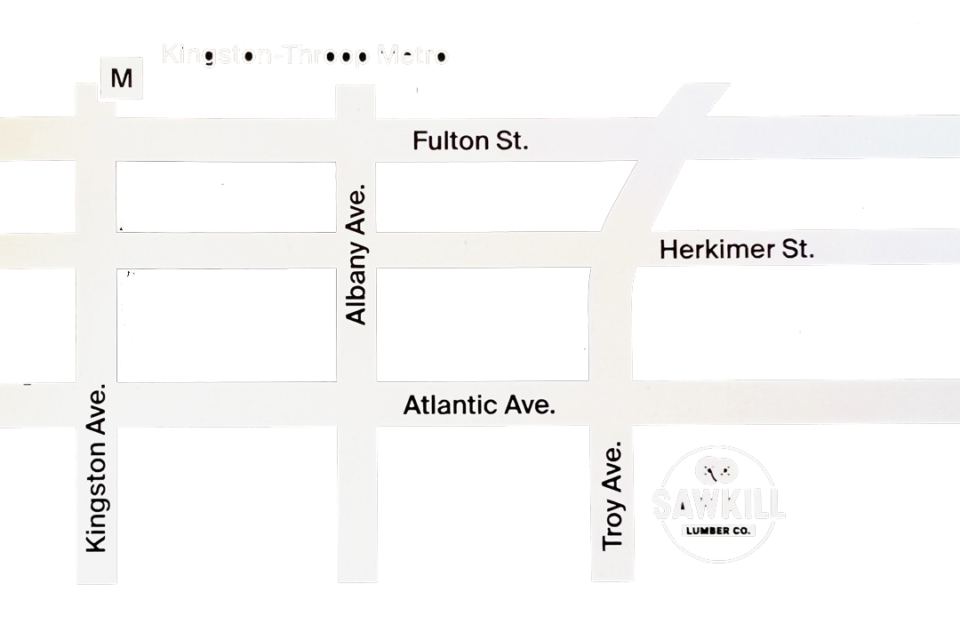Sizes: 1/2-4/4″ x 3″ x 8″ widths x 3-14′ legnths
Applications: Paneling, flooring, furniture.
Defining Characteristics: Mix of darker heart wood and lighter tone sap wood, flat and vertical grain, broad growth rings, above average knots, infrequent nail holes.
Second growth lumber, harvested after the old forests had been logged, and often gets passed over by connoisseurs as the cheap wine of the reclaimed wood world, appreciation siding the dense clear grained and darker hued woods. But second growth, primarily found in conifers like Southern Pine and Douglas Fir, has gained a fan base in recent years, making it deserving of a second look.
Quality– Second growth trees didn’t need to compete for light and nutrients like the high density zones of an old growth forest, leaving it with a lighter broader and softer grain, but on one level, the different is purely aesthetic and subjective, like the preference for broad or fine strokes in a painters style. The broader look may fit a different design vision, bring out a stain or pick up dents and dings in a desirable pattern. And it doesn’t loose ground on a wider and longer plank look that is a staple of reclaimed. Price wise, it’s alway at least 25% lower.
History – Second growth woods rose after the old growth had been felled, around the turn of the century. The trees rose in sparser forests in just a fraction of the time – about forty years or more. Their lumber went into mid-century construction, carrying the provenance of that era. It may not evoke the same mystique as late 19th century woods, but it can have it’s own allure, like the modernist charms of things vintage.
Sustainability – Pound for pound, second growth lumber is still wood, still reclaimed. It’s environmental value in being salvaged is no different than other grades and species. Possibly greener, if you consider that they’re more vulnerable to conventional disposal. The architects and designers that work with lemons and regularly make lemonade have produced some striking work with reclaimed second growth, saving clients some money, and perhaps a few additional trees.



